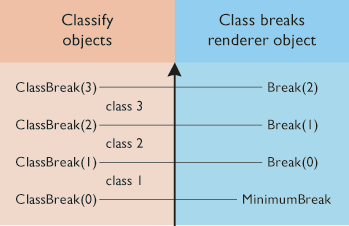 |
This document is archived and information here might be outdated. Recommended version. |
IClassifyGEN.ClassBreaks Property (ArcObjects .NET 10.6 SDK)
 |
This document is archived and information here might be outdated. Recommended version. |
The array of class breaks (double). ClassBreaks(0) is the minimum value in the dataset, and subsequent breaks represent the upper limit of each class.
[Visual Basic .NET] Public ReadOnly Property ClassBreaks As Object
[C#] public object ClassBreaks {get;}
[C++]
HRESULT get_ClassBreaks(
Variant* doubleArrayBreaks
);
[C++]
Parameters doubleArrayBreaks [out, retval]
doubleArrayBreaks is a parameter of type VARIANT*
Note that the Breaks property array on the ClassBreaksRenderer has one less entry than the array returned from Classify. The first break value in the array returned from Classify is put into the ClassBreakRenderers� MinimumBreak property. Next, copy the break values into the ClassBreaksRenderer object. You can set up the symbol property of the classes at the same time.
